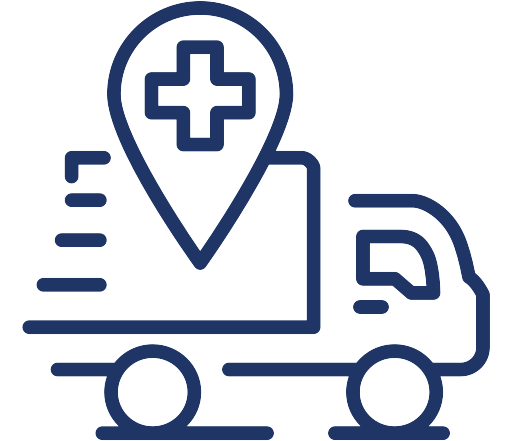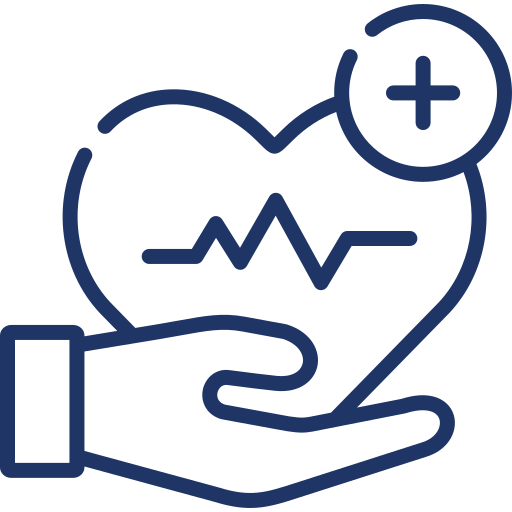Teenage girls are experiencing higher rates of sadness, violence, and mental health challenges. according to a recent report from the Centers for Disease Control and Prevention (CDC).
It’s no secret that teenage girls are going through a lot these days. From the everyday pressures of school, family dynamics, and peer relationships, to the more complex issues of gender identity and anxiety, there is a range of mental health issues that young women must grapple with during their formative years. It can be difficult to tell when sadness becomes something more serious—trauma.
Let’s take a closer look at the CDC’s report and how teenage girls’ mental health struggles can increase to traumatic levels.
CDC’s report on teenage girls and their state of mental health
The Youth Risk Behavior Survey Data Summary & Trends Report: 2011-2021 shows that teenage girls are experiencing higher rates of sadness and depression than their male counterparts. This is particularly concerning given that depression is a leading cause of disability worldwide, and can have long-term consequences for mental health and well-being.
The report also highlights that teenage girls are more likely than teenage boys to experience violence, including bullying, sexual harassment, and physical assault. Some figures of note from the report includes:
- 57% of teen girls in 2021 reported feeling “persistently sad or hopeless” over the past year, up from 36% in 2011 and the highest rate seen in the last decade.
- 18% of teen girls said they had experienced some form of sexual violence in the past year, compared to only 5% of teen boys.
- About 30% of teen girls said they had seriously considered attempting suicide, up from 19% in 2011.
- Nearly 15% of teen girls said they had ever been forced to have sex, a 27% jump from 2019 and the first increase since the CDC began tracking the metric, per the Washington Post.
The transition from sadness to trauma
It is important to understand that teenage girls may go through periods of sadness due to the various physical, emotional, and mental changes they may be going through during this time in their life. However, if these feelings persist for weeks or months on end without any sign of improvement, it could indicate that there is something more serious happening – namely trauma.
Trauma can affect not only how a person feels but also how they think and how they act in response to situations. It is important to recognize the signs of trauma in order to get the appropriate help needed.
Signs and symptoms
When it comes to mental health struggles in teenage girls, parents may not always recognize the signs that indicate the problem has progressed into trauma. Some common symptoms include:
- Avoidance behaviors (not wanting to talk about certain topics or attend certain events)
- Increased isolation from friends and family
- Difficulty concentrating or sleeping
- Physical exhaustion from racing thoughts or nightmares
- Outbursts of anger or frustration
- Lack of interest in activities they once enjoyed
- Changes in appetite
- Substance abuse issues
- Self-destructive behaviors such as cutting or other forms of self-harm
The causes of trauma for teenage girls
There are many potential causes for trauma among teenage girls such as:
- They may have experienced physical or sexual abuse at home or at school
- They may have been victims of bullying
- They may be struggling with gender identity issues
- They may feel overwhelmed by their academic performance or extracurricular commitments
- They may have been exposed to violence in their community
- They may be having difficulty dealing with the death of a loved one
- Or any combination thereof.
Trauma can often lead to depression and anxiety disorders which can further complicate matters if left untreated. It is important for parents and guardians to understand the warning signs so that appropriate action can be taken before it reaches an unmanageable level.
What is trauma and what is not
The American Psychological Association (APA) defines trauma as an emotional response to a terrible event that overwhelms the individual’s capacity for coping. It is often characterized by feelings of fear, terror, and helplessness. Trauma can result from physical or psychological harm and can include experiences such as physical abuse, sexual assault, domestic violence, war or conflict-related events, natural disasters, and accidents. It is important to note that not all traumatic experiences are the same – each individual’s response to trauma is unique and can vary significantly depending on the circumstances surrounding the event or experience.
What is not considered trauma? While some difficult life experiences may be upsetting or cause distress, they are not necessarily considered trauma. For example, a bad grade or the death of a pet may be difficult to cope with but they are not considered traumatic events. Additionally, everyday stress such as work deadlines or relationship problems are not typically considered traumatic experiences. It is important to remember that only experiences which overwhelm our capacity for coping can be considered traumatic.
How to support teens who are experiencing trauma
It is important for adults who interact with teens on a regular basis—such as teachers, parents, guardians—to be aware that these issues exist and to be prepared to address them when they arise. So, what can be done to address these concerning trends? Here are a few key strategies that parents, caregivers, and educators can consider:
- Create a supportive environment: It’s important for teenage girls to feel supported and validated in their experiences. This can include creating a safe space for them to talk about their feelings, and offering resources like counseling or therapy when needed.
- Address violence and harassment: The report shows that teenage girls are more likely than teenage boys to experience violence, harassment, and bullying. It’s crucial for parents, educators, and other adults to take these issues seriously and address them proactively.
- Encourage self-care: Teenage girls can benefit from strategies like exercise, mindfulness, and self-care to manage feelings of sadness and depression. Encourage them to take care of their physical and emotional health, and to prioritize self-care practices that work for them.
- Connect with resources: There are many resources available for teenage girls struggling with sadness, depression, and mental health challenges. These can include counseling, therapy, support groups, and online resources. Encourage them to seek out these resources when needed, and to connect with professionals who can provide guidance and support.
Additionally, building trusting relationships with teenage girls so that they feel comfortable talking about what they are going through is also key in helping them cope with any difficulties they may be facing during this difficult stage in their life.
Reach out for help
With so many unique pressures facing teenage girls today, it’s important that you recognize when those pressures become too much to handle on their own. If you suspect your daughter or someone you know is struggling with trauma due to any number of potential causes, reach out for help immediately before the problem spirals out of control. Nao Medical is here to support you.
Let’s work together to ensure that all young people have the support and resources they need to thrive. With proper treatment from qualified mental health professionals, they will have an opportunity to heal from their traumas and move forward into adulthood feeling empowered instead of defeated.
 (917) 310-3371
(917) 310-3371


